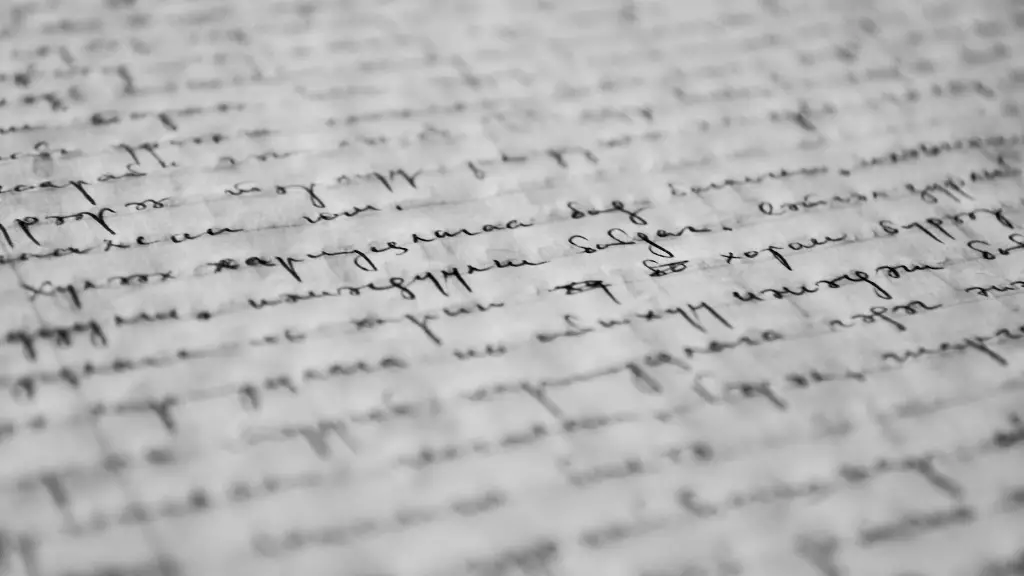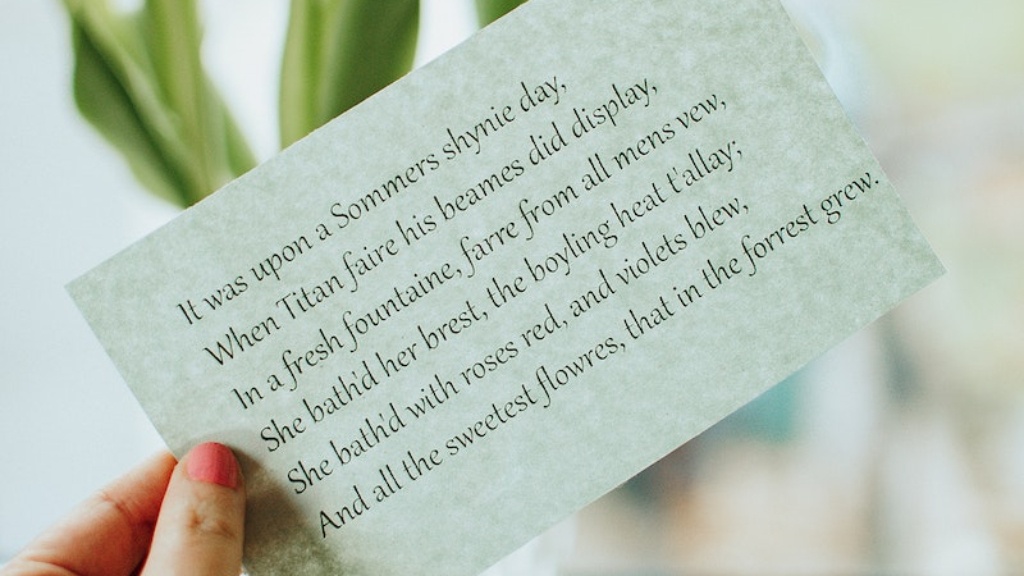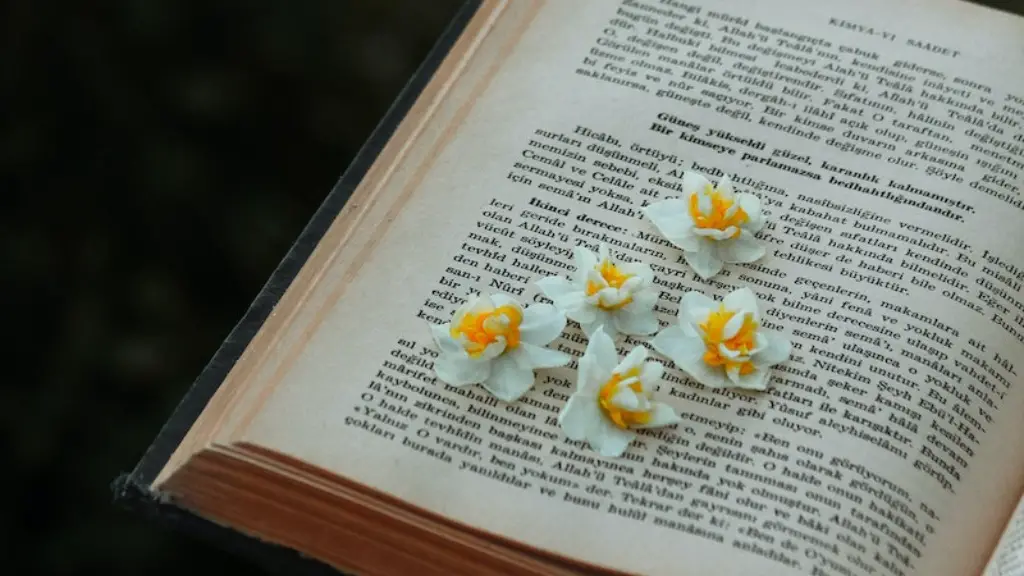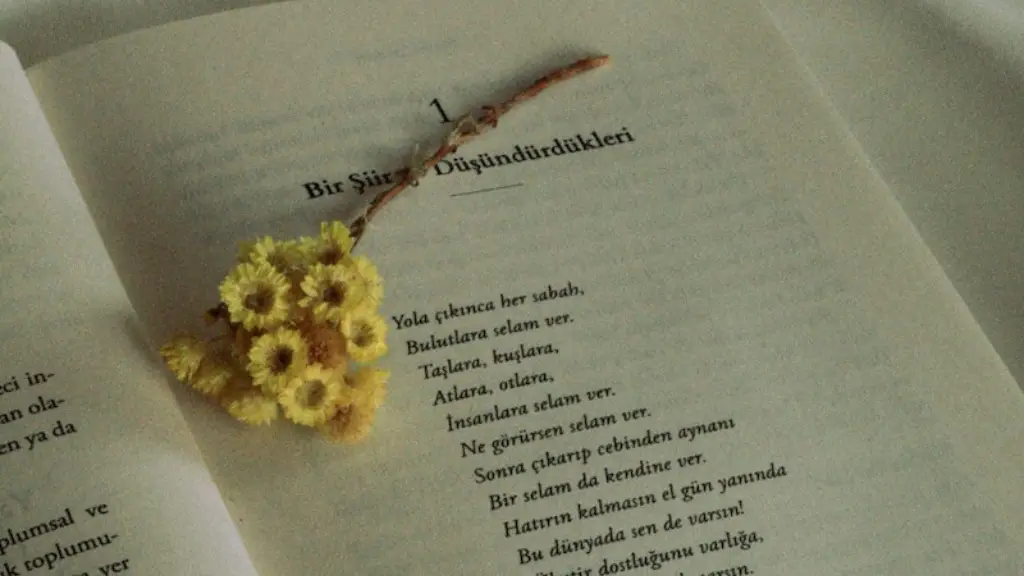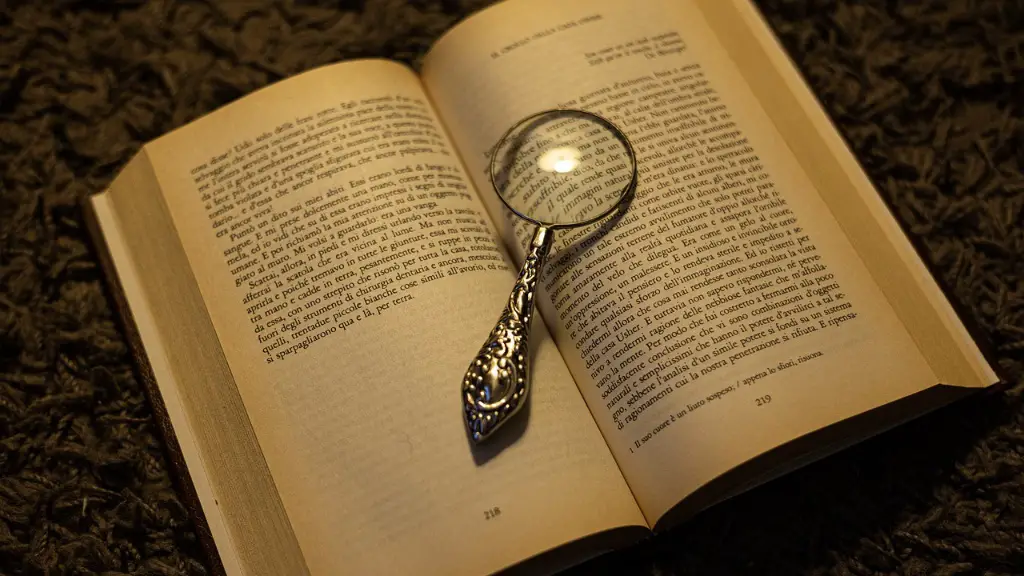Imagery is one of the most fundamental aspects of poetry, and it has been used in every literary genre since ancient times. Imagery is used to give a poem greater depth and complexity, and it can be used to convey a variety of different themes, moods, and emotions. There are several different types of imagery that can be found in poetry, and this article will explore each of them.
Visual Imagery
Visual imagery is the type of imagery that is used most commonly in poetry. It is used to evoke a particular image or scene in the reader’s mind, allowing them to get an idea of the experience being described. Visual imagery often includes the use of color, texture, light, and shadow to suggest a particular mood or atmosphere to the reader. It is often used to evoke a particular emotion or mood, such as fear, sadness, or joy.
Visual imagery can be used to create vivid and detailed descriptions that can help to bring a poem to life. Many poets use visual imagery to create an image or scene in the reader’s mind that can help to add meaning and emotion to the poem.
Auditory Imagery
Auditory imagery is the type of imagery used in poetry to invoke the sounds of a particular scene or environment. It can be used to evoke the sound of voices, birds, music, or other natural sounds, as well as the sound of different machines or objects. Auditory imagery is often used to create a sense of atmosphere or mood, and it can help to create a more immersive experience for the reader.
Auditory imagery can also be used to help create a sense of movement or action in the poem, as the reader can imagine hearing the characters and objects in the poem interacting with one another. This can help to add life and energy to a poem and bring it to life in the reader’s mind.
Olfactory Imagery
Olfactory imagery is the type of imagery used to invoke the smells or scents of a particular scene or environment. This type of imagery is used to create a sense of atmosphere or mood, and it is often used to evoke emotions such as longing or nostalgia. Olfactory imagery can be used to help create a vivid and realistic experience for the reader, and it can help to evoke a range of different emotions and feelings.
Olfactory imagery can also be used to help create a sense of reality, as the reader can imagine being able to smell the things that the poem is describing. This can help to bring the poem to life and draw the reader further into the experience.
Tactile Imagery
Tactile imagery is the type of imagery used to evoke the feeling or sense of touch of a particular scene or environment. This type of imagery is often used to create a tangible connection between the reader and the poem, and it can help to evoke a range of different emotions and feelings. Tactile imagery can be used to evoke a sense of warmth or cold, softness or hardness, and can help to create a more real and immersive experience for the reader.
Tactile imagery can also be used to invoke a sense of movement, as the reader can imagine actually feeling the things that are being described in the poem. This can help to bring the poem to life and help the reader to connect with it emotionally.
Gustatory Imagery
Gustatory imagery is the type of imagery used to evoke the taste of a particular scene or environment. This type of imagery is often used to evoke emotions or feelings or to create a vivid and realistic experience for the reader. Gustatory imagery can be used to evoke a wide range of flavors and textures, and can help to evoke emotions such as nostalgia or longing.
Gustatory imagery can also be used to help create a sense of reality, as the reader can imagine being able to taste the things that are being described in the poem. This can help to draw the reader further into the experience and make the poem more real and immersive.
Kinesthetic Imagery
Kinesthetic imagery is the type of imagery used to evoke the sensation of movement in a particular scene or environment. This type of imagery is often used to evoke emotions or feelings or to create a more realistic experience for the reader. Kinesthetic imagery can be used to evoke a wide range of sensations such as speed, acceleration, tension, and relaxation.
Kinesthetic imagery can also be used to help create a sense of reality, as the reader can imagine actually feeling the things that are being described in the poem. This can help to bring the poem to life and make the reader feel more connected to the poem.
Symbolic Imagery
Symbolic imagery is the type of imagery used to evoke a symbolic or abstract meaning. This type of imagery is often used to evoke a deeper and more complex message in a poem. Symbolic imagery can be used to evoke a wide range of meanings, and it can help to evoke emotions or feelings that cannot be described through words alone.
Symbolic imagery can also be used to evoke a sense of mystery and complexity, as the reader can interpret the symbolism in different ways. This can help the reader to draw their own conclusions and make connections to the poem that they may not have noticed before.
Metaphorical Imagery
Metaphorical imagery is the type of imagery used to evoke comparisons between one thing and another. This type of imagery is often used to create a vivid and imaginative experience for the reader, and it can be used to evoke emotions or feelings in an indirect way. Metaphorical imagery can be used to evoke a wide range of meanings, and it can help to create a more mysterious and complex experience for the reader.
Metaphorical imagery can also be used to evoke a sense of universal truth, as the reader can interpret the metaphors in different ways. This can help to bring the poem to life and encourage the reader to think more deeply about the poem.
Personification Imagery
Personification imagery is the type of imagery used to evoke a character or a person in the poem. This type of imagery is often used to create an emotional connection between the reader and the poem, and it can be used to evoke emotions and feelings in a more direct and personal way. Personification imagery can be used to evoke a wide range of emotions, and it can help to make the poem more real and immersive.
Personification imagery can also be used to evoke a sense of emotion or feeling, as the reader can imagine the character in the poem actually feeling the things that are being described. This can help to bring the poem to life and make the reader feel more connected to the poem.
Simile and Metaphor Imagery
Simile and Metaphor imagery is the type of imagery used to compare one thing to another. This type of imagery is often used to create a vivid and imaginative experience for the reader, and it can be used to evoke emotions or feelings in an indirect way. Simile and metaphor imagery can be used to evoke a wide range of meanings, and it can help to create a more mysterious and complex experience for the reader.
Simile and metaphor imagery can also be used to evoke a sense of understanding and clarity, as the reader can interpret the metaphors in different ways. This can help to bring the poem to life and encourage the reader to think more deeply about the poem.
